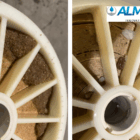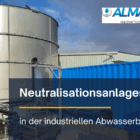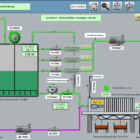Aluminum sulfate (Al₂(SO₄)₃) is an important chemical substance in water and wastewater treatment. It is mainly used as a precipitant to remove impurities such as suspended solids, organic substances and phosphates from water. Due to its versatile application and high efficiency, aluminum sulfate is indispensable in many industrial processes, especially in water treatment, wastewater treatment and in the treatment of drinking water.
Table of contents
Technical background
Aluminum sulfate is an inorganic salt that dissociates in water to form aluminum ions (Al³⁺) and sulfate ions (SO₄²-). It acts as a coagulant by neutralizing the charge of colloidal particles in water. This allows the small particles to combine to form larger flocs (flocculation), which can then be removed more easily by sedimentation, filtration or flotation.
The chemical reaction that leads to the formation of flocs is known as precipitation and plays a central role in the treatment of water and wastewater. The addition of aluminum sulfate creates a gel-like aluminum hydroxide (Al(OH)₃), which acts as a precipitant to capture the substances dissolved in the water and bind them in solid particles.
You can find an overview of our precipitants, flocculants and other resources for wastewater treatment on the following page: ALMA AQUA Wastewater
Application in practice
Aluminum sulfate is used in various industries, including:
Drinking water treatment: Aluminum sulfate is used in drinking water treatment to remove suspended solids, organic compounds and microorganisms. The formation of flocs allows these impurities to settle easily so that the water can be purified after filtration.
Waste water treatment: In industrial wastewater treatment, aluminum sulfate is used to precipitate pollutants such as phosphates and other dissolved substances. Aluminum sulfate plays a central role in phosphate elimination in particular, as it efficiently binds phosphates and thus prevents them from being discharged into bodies of water. This is important in order to minimize the risk of eutrophication in natural waters.
Paper industry: In paper production, aluminum sulfate is used as a retention agent to bind fillers and fibers and improve paper quality. It helps to increase the strength of the paper and improve drainage.
Flocculation and precipitation plants: Aluminum sulfate is used in precipitation and flocculation plants to remove particles contained in wastewater or raw water. In combination with flocculants (e.g. polyelectrolytes), the efficiency of particle separation can be significantly increased.
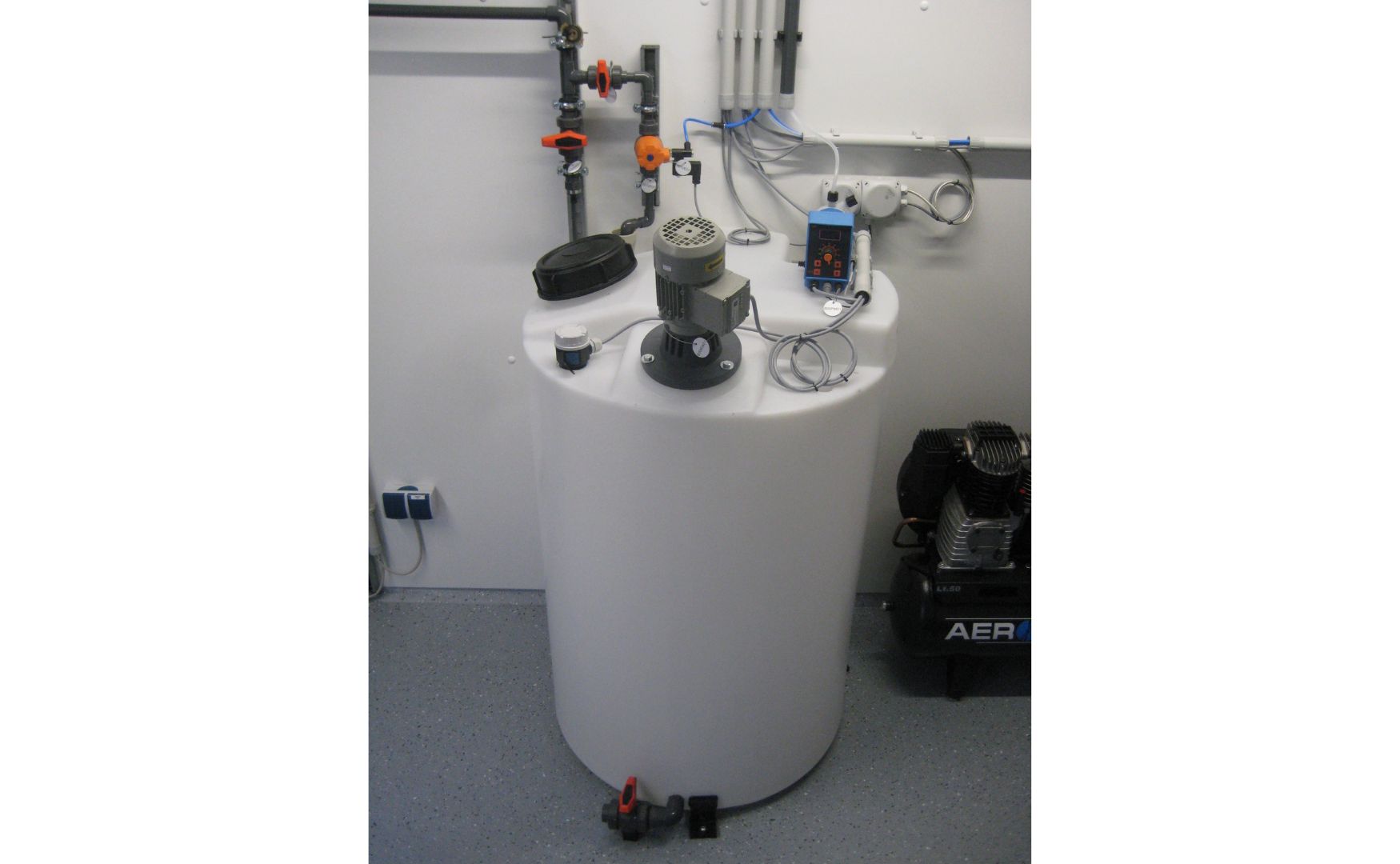
Photo: Our automatic dosing station for aluminum sulfate(ALMA FLOC M)
Reactions and pH value dependency
The effectiveness of aluminum sulfate depends heavily on the pH value of the water. Optimum flocculation occurs in a slightly acidic to neutral range, usually between a pH value of 5.5 and 7.5. If the pH value is too low, aluminum sulfate can lead to over-acidification of the water, while if the pH value is too high, the formation of aluminum hydroxide is restricted.
In alkaline conditions, it may be necessary to lower the pH value by adding acids in order to optimize floc formation. In addition, the use of aluminium sulphate can influence the pH value of the treated water, which must be corrected by subsequent pH neutralization.
Advantages and disadvantages
Advantages:
- Efficient removal of phosphates and suspended solids
- Cost-effective and available in large quantities
- Fast floc formation, which enables rapid separation of impurities in many processes
- Widely used and proven in many industrial applications
Disadvantages:
- If the dosage is insufficient, residual aluminum levels may remain in the purified water, which must be checked
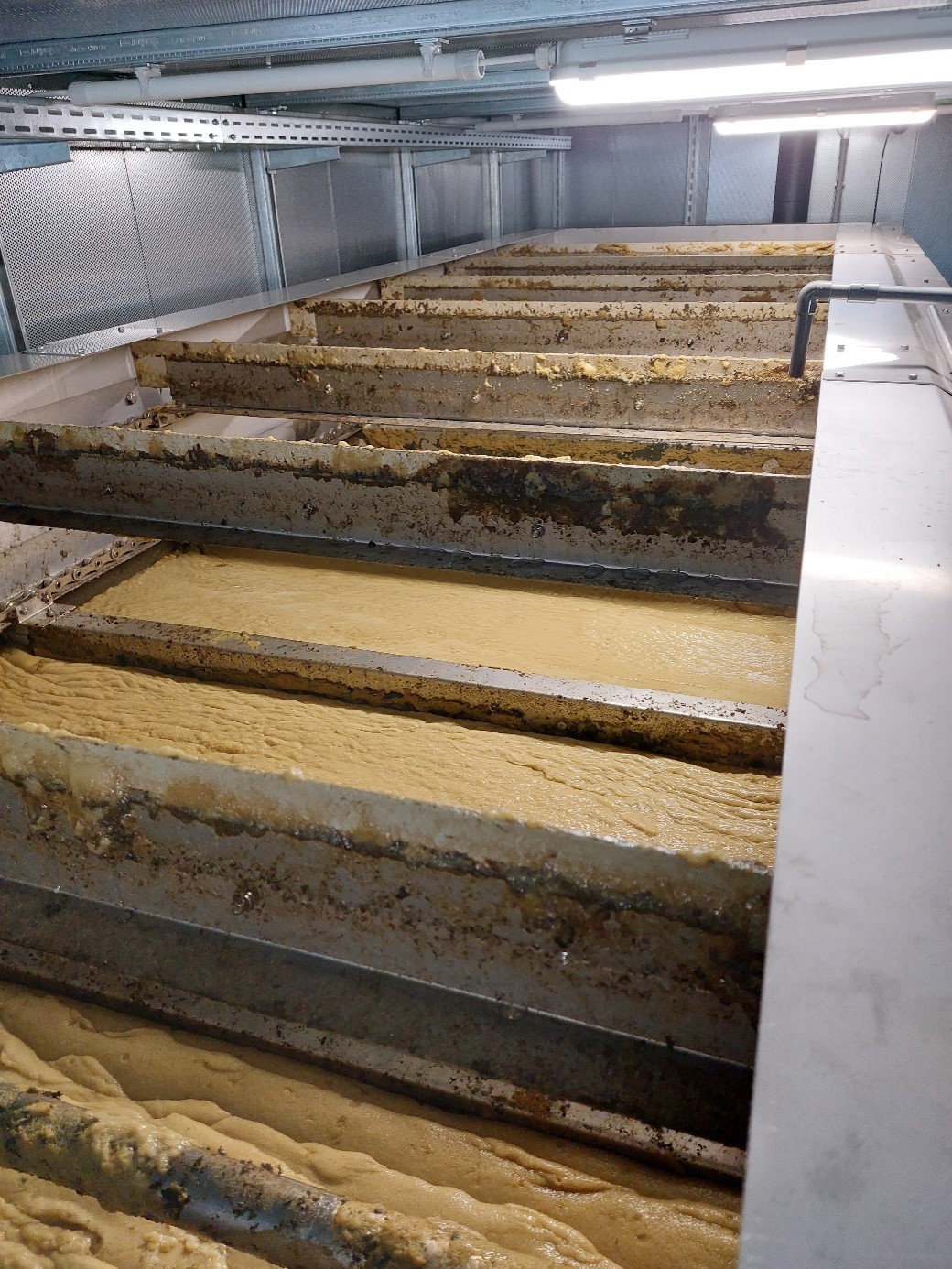
Photo: Precipitants based on aluminum salts are particularly suitable for flotation plants, as aluminum-containing precipitants have a lower molecular weight than iron-containing precipitants. The photo shows flotate sludge produced by the addition of precipitants containing aluminium. Plant: ALMA NeoDAF flotation plant
Conclusion
Aluminum sulfate is an indispensable precipitant in water and wastewater treatment, used in various industrial processes to remove suspended solids, eliminate phosphates and improve water quality. Its use in precipitation and flocculation systems as well as in drinking water treatment demonstrates its versatility and efficiency, whereby correct pH regulation and dosing are crucial for optimum effectiveness and environmental protection.
You can find an overview of our precipitants, flocculants and other resources for wastewater treatment on the following page: ALMA AQUA Wastewater
For further information on our products, please feel free to contact us at any time!


